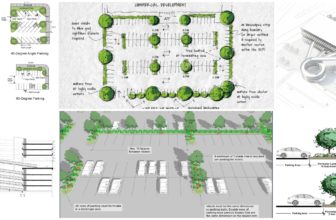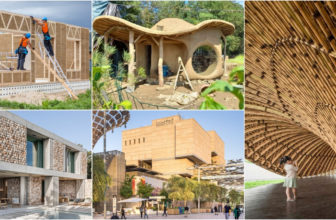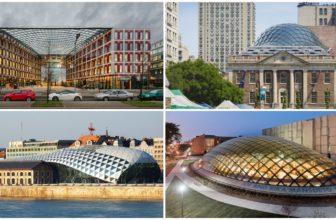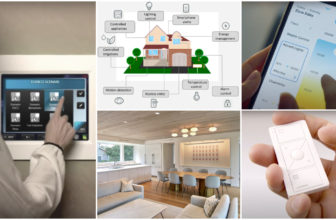Brodsky & Utkin’s Paper Architecture
Caused by the deep recession in the 1970’s and the lack of creative breath under the communist rule, we can say that paper architecture is an archetypal figure which is expected to rise again in the current economic situation and fewer projects on the board. This opportunity predate the downturn and reside mostly within design research and thinking enabled by the computer, creating design projects that is destined to remain un-built.
Paper architecture is an outlandish dreamy Utopian fairy proposals with much designs and less built realities, coming up with this definition made me wonder “do built realities gives the design more? will those fairy proposals be less than the actual built realities?” But after seeing Brodsky & Utkin paper architecture I know for sure that their designs are not less than the any built project and maybe more meaningful and filled with humanity than real buildings.
Alexander Brodsky and Ilya Utkin trained in the soviet union in the seventies only to become part of a loosely organised group of soviet artists -Mikhail Flippov, Nadia Bronzova and Yuri Avvakumov amongst others- called “Paper Architects”. Together they created “etchings” in the early days of Glasnost as a way of protesting against all buildings made, at that time all buildings were created under certain communist “Rules” that had to be followed which created ugly, un-humane, lacking any signs of aesthetic ornaments or decorations, cheaply erected buildings.
Where every artist and creative mind in Russia were suppressed eventually leading those artists into leaving, Brodsky and Utkin stayed working under the soviet union while creating there paper architecture projects as breathing to their creative souls and a way of saying “we are still thinking outside the box, breathing our creativity inside your dead concrete boxes”.
Their etchings had writings describing their vision in a funny sarcastic words, it doesn’t look like a normal drawing or a sketch it shows as if tons of ideas were trapped for a long time and came rushing into their papers.
Apparently they had lack of papers which shows in their numbering since some has higher number than the quantity actually printed as if it was part of their dream to find more paper in the future where they will showcase the missing designs.
In the projects “A Glass Tower” and “Crystal Palace,” you can see their search for transparency, their escape from all hidden secrets in them concrete boxes, their need to express and show rather than suppress.
“Villa Claustrophobia” shows their resentment to closed non-user friendly boxes that they were in.
“A Bridge for Real Travelers” reads in the images bottom corner :
“A real travels(sic) needs a real Trial. A real traveler must be ready to everything during his journey. The bridge between two islands is invisible but mighty. It connects the islands but doesn’t change the landscape. Walking along it in calm and crossing the conventional boundary the traveller(sic) feels himself on the real boundary between the sky and the ocean.” showing their dream of a mighty but invisible bridge that doesn’t change the landscape but rather blends into the landscape describing the feeling of the user when crossing the bridge which should be calm and on the real boundary between the sky and the ocean.
This same concept can be seen in their project “Town Bridge” where as seen in the etching their bridge connects two island as part of the landscape as if the islands reached out to each other rather than putting and outside element connecting the two elements, those beautiful fantasies, user friendly concepts were against everything practiced by the soviet union at that time.
I see those etchings as documenting for a noble struggle that can’t be seen as just design projects, it was their refugee rather than the escape their way of doing what their creative minds were meant to do. It takes a strong architect with powerful vision to create designs knowing that those designs were never meant to be built.
Brodsky & Utkin have gone there separate ways in 1993, Utkin designs for the ballet and lovely melodramatic architectural photography. Brodsky creates installations and large public art commisions such as Palazzo Nudo, currently on view in Pittsburgh and The Canal Street Subway Project, a vision of Venice on an abandoned subway track.
Making this article gave me a great feeling knowing that “destined to be on paper” architecture stands for something big an out-breath a movement a struggle a rebellious testimony of resistance. Underlying those visuals is an unmistakable moral that they stood for: that the dehumanizing architecture of the sort seen in soviet cities is a sin in the right of all human beings.











